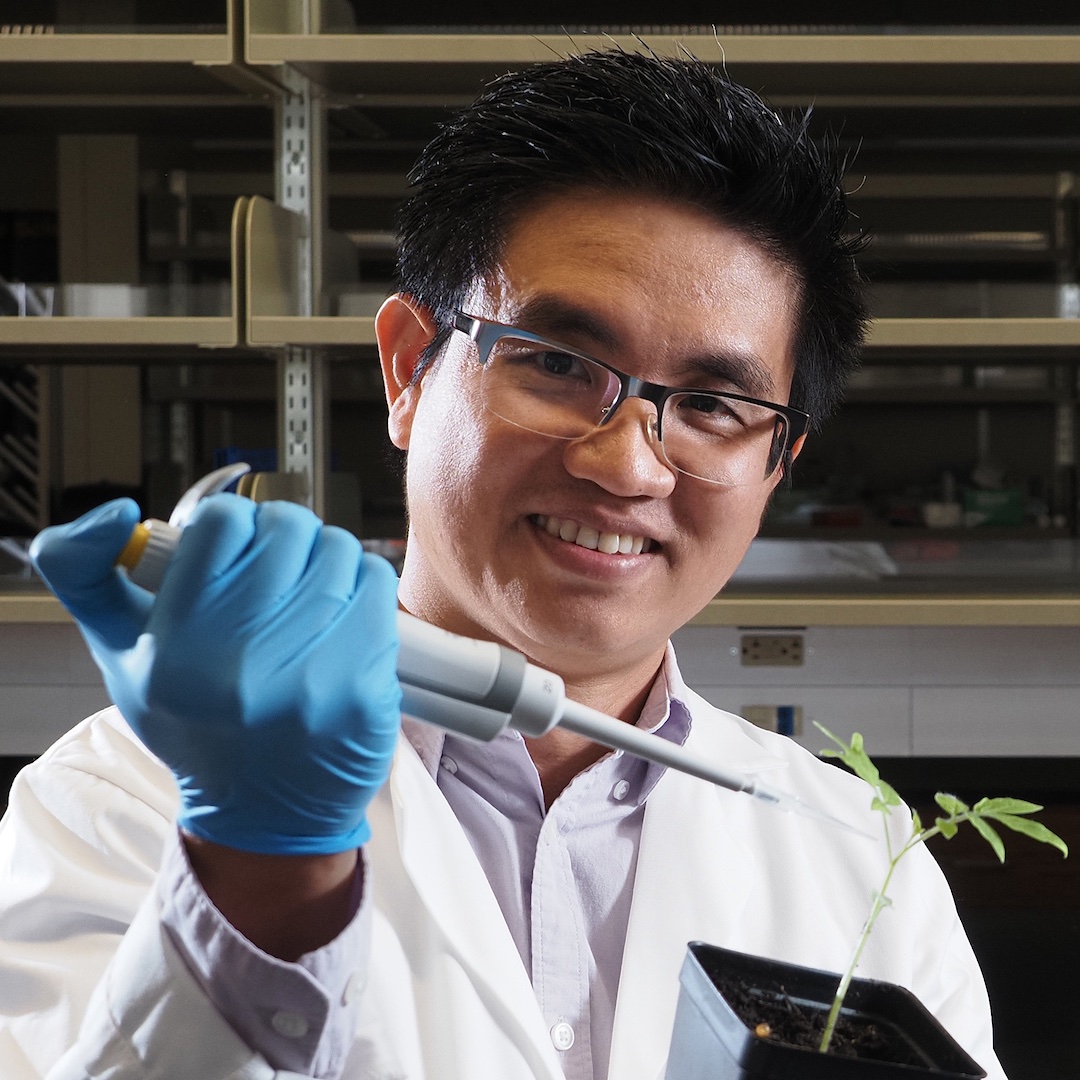Dr. Tuan Tran's Research
Areas of interest
· Molecular Plant-Microbe Interactions
· Plant Cell Biology
· Bacterial Pathogenesis
· Biofilms
In the Plant-Microbe Interactions research group, we use interdisciplinary approaches to dissect mechanisms that allow plants to maintain membrane integrity and defense response signaling.
The plant plasma membrane is embedded with a plethora of receptors which function as “sensors” to detect subtle changes in the environment, including the presence of plant pathogens. These receptors are organized into nanodomains - specific regions on the plasma membrane that are highly enriched in ordered lipids, such as sphingolipids and sterols. The integrity of these nanodomains have gained much attention lately as there are mounting evidence suggest their direct involvement of these nanodomains in association with immune complex signaling and plant interactions with pathogenic and beneficial microbes. Using interdisciplinary approaches, including advanced microscopy, genetics, and biochemical analyses, we will dissect the functions of plasma membrane constituent and related biological processes involved in plant defense signaling.
Another direction of our research group is to investigate the life of bacteria as biofilms inside plant hosts. Biofilms are structured microbial community that settle on biotic/abiotic surfaces and they play critical roles in a large number of many hospital opportunistic infections caused by clinically important pathogens (Pseudomonas aeruginosa, Staphylococcus spp.). Similar to human pathogens, plant pathogenic bacteria can also reach very high density inside host tissue and complex 3-D structures of biofilms has been reported in several bacterial plant pathogens. The functions of phytopathogenic biofilms, however, are poorly understood. Studying how phytopathogenic bacterial biofilms develop, mature, and spread systematically in planta, therefore, are critical for our understanding of bacterial plant diseases.
For a full listing, visit Tuan's Google Scholar page or lab website.
See MoreUSDA Specialty Crop Block Grant Program
NSF BRC-BIO
ASPB BLOOME



